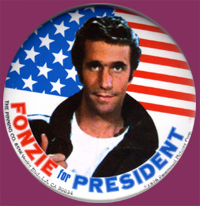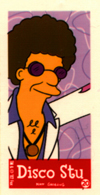THE WORKING STIFF – Darren Garnick
Boston Herald (Nov. 11, 2009)
**
The catchword “buzz” is already overused in the advertising and public relations worlds, but brace yourself for an infestation. Insects could be the new entry level employees at marketing firms. They don’t require much office space and they (presumably) work for free.
German publisher Eichborn recently charmed the Frankfurt Book Fair by releasing a fleet of 200 houseflies into the convention center, soaring above exhibitors with tiny advertising banners trailing behind them. Imagine flags the size of fortune cookie strips being dragged in the sky by dental floss.
Inexplicably, the annoying housefly is Eichborn’s corporate logo. The publisher used the flies to randomly promote their trade booth number to prospective clients. The publicity stunt’s architect, the Jung von Matt agency, calls the technique “Flyvertising” or “Fliegenbanner” in German.
It’s a delicate balance. Eichborn wanted to convey an image of a cutesy cartoon, an anthropomorphic airplane with bulging eyes. But real houseflies spread disease and tend to congregate around animal corpses, rotten food and doggie doo-doo.
It’s the rare situation where killing the messenger makes a lot of sense.
One of the most bemused observers of the advertising scene is Pittsburgh artist Emily Berezin, 23, who rightfully could brand herself as the “Mother of Insect-Based Marketing.” Four years ago, the part-time nanny launched her satirical “Parasitic Advertising” project, which involved painting relevant corporate logos on live insects and then releasing them back into the wild to spread brand awareness.
Berezin affixed the Fed Ex logo to a speedy grasshopper, Adidas on an athletic spider and Pepsi on a sexy ladybug. Her most recent effort, completed last summer, was fusing the Volkswagen brand with a June beetle she found on a sidewalk. The cold-blooded bugs were first placed in the refrigerator to slow down their reflexes and the artist was careful not to get paint in the creatures’ eyes or mouths.
“I grew up in the woods and loved to play in the swamps,” says Berezin. “My childhood dream was always to be an entomologist.”
“My original point was that advertising has become so invasive that it will soon be crawling into our homes,” she adds. “In reality, I can’t imagine it being that effective. Just the manpower alone to tie little strings to the flies would be absurd.”
But labor issues aren’t why Flyvertising will likely stay grounded. Only the rarest customer will want to calculate the physics of how different cargo loads affect speed and altitude. Use ravenous horseflies and you may lose your customers for life.
Embedding corporate logos on fly swatters, sticky flypaper or bug spray might initially be welcomed, but the gesture would be neutralized when the pests promote the same brands.
For the record, cockroaches also don’t make for an ideal advertising medium. According to Berezin, their skin is very resilient to paint. The solution, the artist suggests, may lie in using only nice and pretty insects in future publicity campaigns.
“Maybe they can start genetically breeding logos into butterfly wings,” she says.
**
Darren Garnick’s “The Working Stiff” column runs every Wednesday in the Boston Herald. Visit the Stiff blog at: www.bostonherald.com/blogs/workingStiff/













